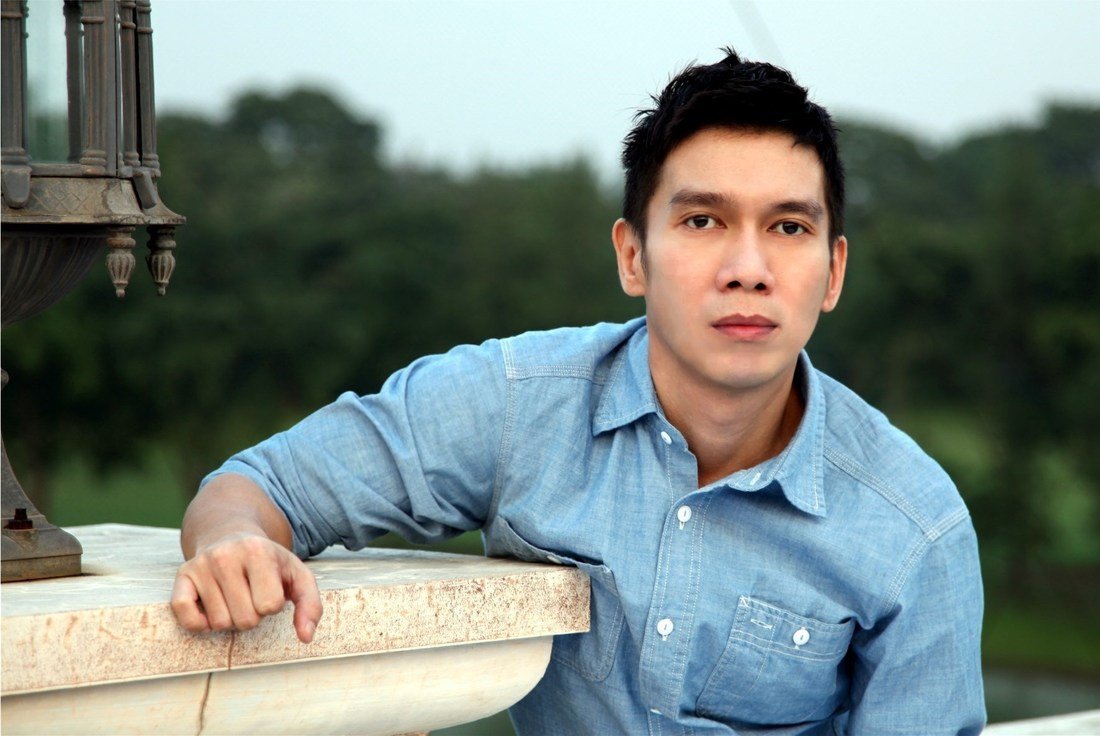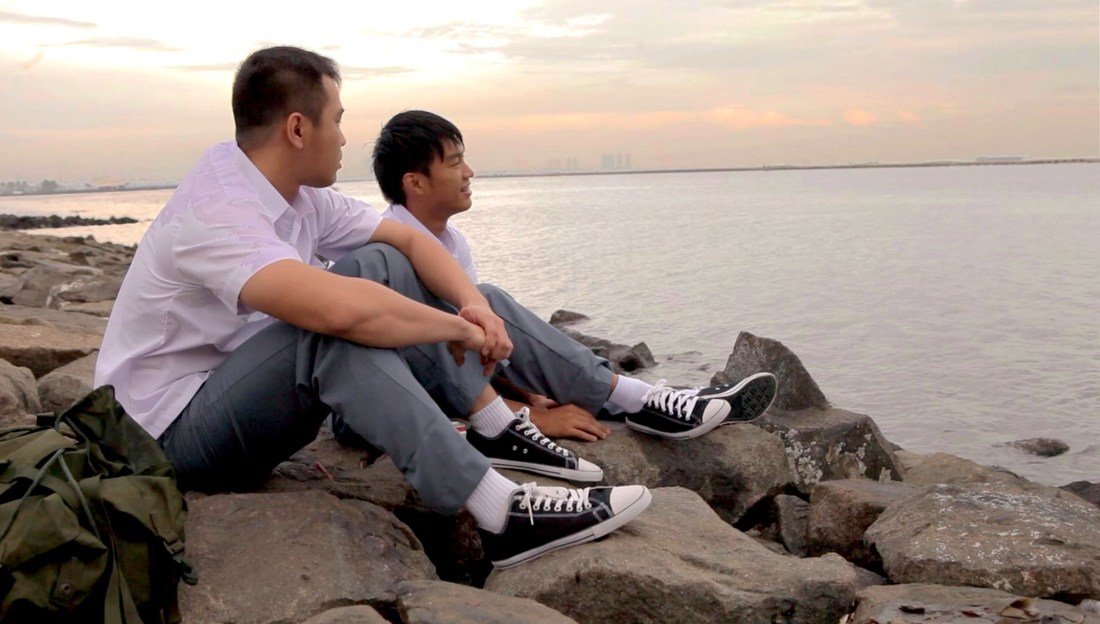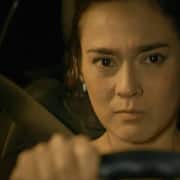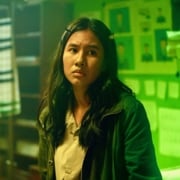Andri Cung is one of Indonesia’s rising young film directors. His 2010 short, Payung Merah (Red Umbrella), won Best Asian Short Film at Screen Singapore in 2011, and was selected at festivals including the 2011 Hong Kong International Film Festival and the 2011 Palm Springs International ShortFest. The Sun, the Moon and the Hurricane, his recently released debut feature, tells the story of a young man’s search for love and happiness. The film screened at the 2014 Vancouver International Film Festival and will be shown in Melbourne as part of the Indonesian Film Festival 2016. Indonesia at Melbourne spoke to Andri ahead of his arrival in Melbourne, where he will participate in a Q&A following the screening.
The Sun, the Moon and the Hurricane is a story told in three parts. Could you describe what each part represents?
The three chapters of the film represent the struggles that the film’s protagonist, Rain (William Tjokro), a gay man, experiences during his teens, his 20s and his 30s. The hurricane represents the turbulent period when Rain is in high school. He is struggling to accept his identity, to face up to the feelings he is having about his best friend, Kris (Natalius Chendana). The sun represents his 20s, that period when we are becoming more independent, and starting to earn money. Rain is working as a photographer and tries to open up and experience what the gay life has to offer. He travels to Thailand to report on the Songkran festival, and meets Will (Cornelio Sunny), the carefree “sun” who evokes all those feelings that you associate with summer or being in the sun. The third section, the moon, is about his 30s, when he is expected to be more mature, to have more direction in life. When Kris comes into his life again, Rain starts to question: “Am I really any wiser?” The film is essentially about his expectations for his life and how those compare to the way things have turned out. Although the protagonist is gay, these are issues that we all grapple with as we grow older.
The film was screened in Indonesia in early 2015. How has the film been received over recent months, in the wake of the hysteria about the “LGBT threat”?
During our initial run of screenings in 2015, the film was very well received. We had a full house in about 90 per cent of screenings. We didn’t expect that this would be the type of film that so many people would want to watch. We have only had two screenings this year since the LGBT issue blew up but thankfully both went smoothly.
You were a photographer before you made films. How has photography influenced your approach to filmmaking?
Being a photographer has helped a lot, particularly for things like finding the best light. I do a lot of live-action photography, where you rarely have the perfect light. As a photographer, I’m less interested in fashion or glossy print photography. I work as a photographer for the United Nations Population Fund (UNFPA), and I much prefer capturing real people, rather than models. This is an approach I take in my film work as well – I don’t like artifice or anything too pretty. A few years ago I was shooting a film called Buang (The Disposal) about human trafficking, and we were discussing the look of the film. Someone suggested taking a more beautiful shot and I remember saying: “Human trafficking is an ugly issue. I don’t want to present a sanitised version, I just want to present it the way it is”. I like to take a personal approach, even during filming. It is almost like I have invaded the characters’ personal space. I am not just behind the camera, I want to be right in there with the actors, so I hope that comes through.
Has it been difficult to hand over control to other camera operators?
I’m quite picky about the cinematographers I work with. I interviewed about 15 cameramen for Rawa Kucing, a short film I made a few years ago. Since I also held a camera before I was a director, I need to find cameramen who understand me, the way I work and the look that I am trying to achieve in each film. During The Sun, for example, we had two cameramen during the shoots in Bangkok and Bali, including me. For the section shot in Jakarta, I wanted the film to have a different feel, so I let go of the camera and let a third cinematographer take control.
You have been involved in a web series, Kisah Carlo, which tells the stories of HIV and AIDS patients at a hospital in Jakarta. Can you tell us more about it?
It is an important project for me, for many reasons. We made the series with Ruang Carlo (Carlo’s Corner), an HIV and AIDS clinic at St Carolus Hospital in Jakarta. The hospital wanted to do a public education project on HIV and AIDS but didn’t want it to be a typical commercial or PSA. I suggested a web series and they were open to the idea. Often people don’t think creatively about web series, but with Kisah Carlo we wanted to offer something more. The script, the shoot, we approached everything as we would any other film. The series was funded by the hospital itself, and not by a foreign donor. When I first met with the hospital, we didn’t have any money to shoot it. We talked about finding a donor but in the end the hospital decided that it would finance the series itself. For such a sensitive issue, we didn’t want anything attached to the project that might compromise its message.
How important is activism in your work?
I wouldn’t say I have a predetermined agenda, I just choose the stories I believe in, the stories that touch me and the issues I care about. When St. Carolus approached me about Kisah Carlo, for example, they gave me a book that contained dozens of true stories from their patients. The stories really touched me, it was very strong material. The concept came after that. Going back to when I was studying film, people always told me to do something that you believe in and do it with your heart. When you do that, the films choose themselves.
Indonesian films have been getting a lot of international attention over the past year or two. What do you think about the state of Indonesian cinema at the moment?
As a filmmaker, and you would probably hear this from most Indonesian filmmakers, the situation inside the country right now is pretty dire. Audiences are shrinking and it is getting harder to finance movies. Regardless, I think independent filmmakers will continue to find a way to make their films. I hope that the international attention over the past year will be a turning point for Indonesian film. Hopefully there will be more opportunities for films to be picked up internationally, or more international co-productions. A lot of my friends who are not in the industry complain that there are no good Indonesian films, but they’re wrong! There are plenty of good Indonesian films, but when they are released in the cinema they refuse to watch them. I hope the additional global attention encourages audiences in Indonesia to reconsider Indonesian films. If you go out and watch them you’ll find there are plenty of great Indonesian films.
The Sun, the Moon and the Hurricane
Writer and director: Andri Cung
Cast: William Tjokro (Rain), Natalius Chendana (Kris), Cornelio Sunny (Will), and Gesata Stella (Susan)
Year of production: 2014
Screening: Monday 18 April 2016, 7pm at ACMI Cinema 1
Indonesia at Melbourne is an official media partner of the Indonesian Film Festival. Photos courtesy of the director.








